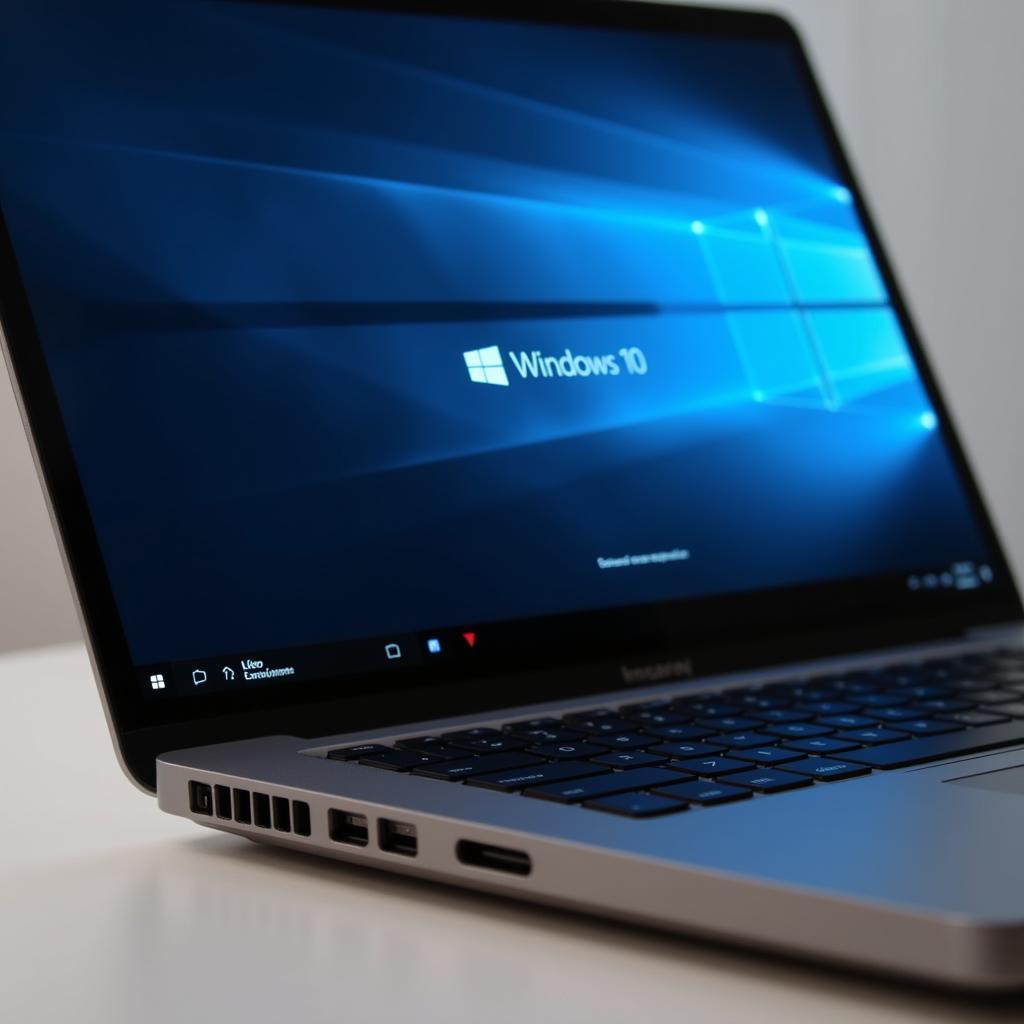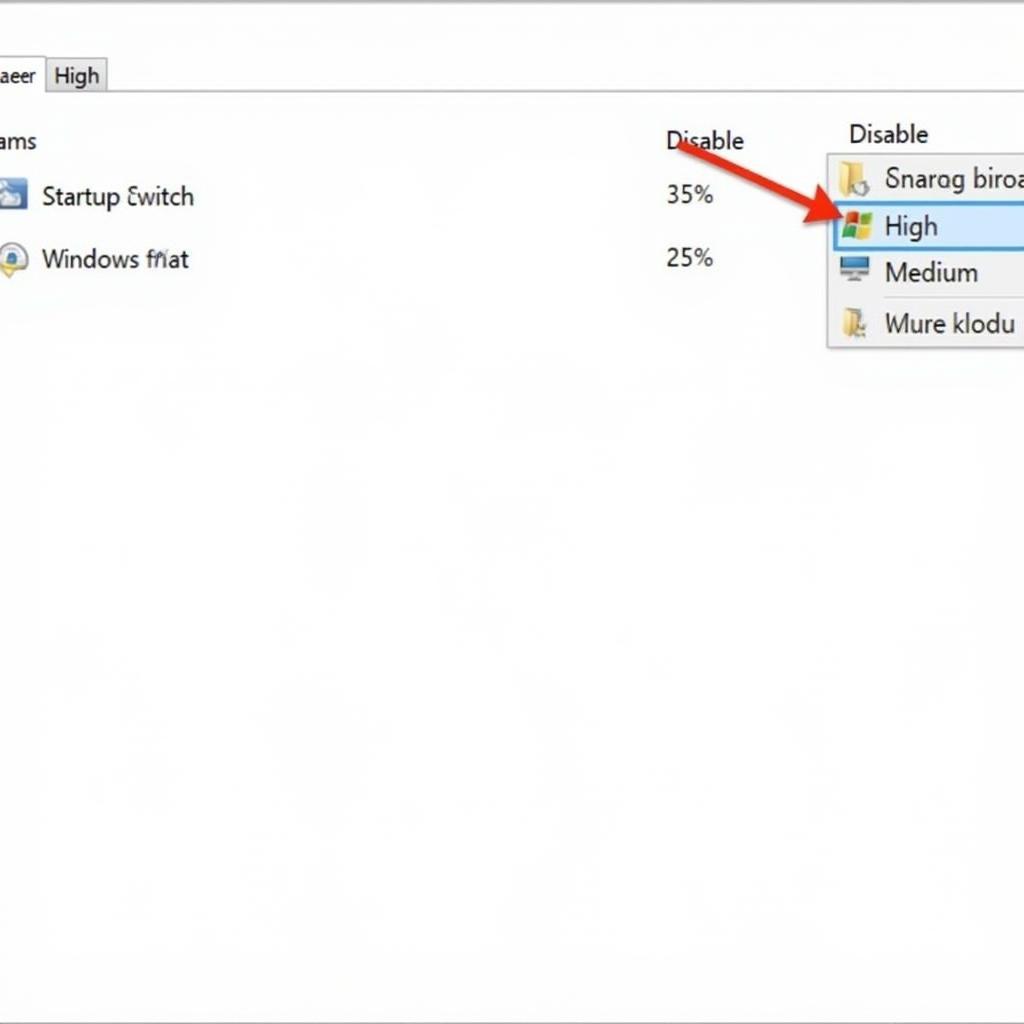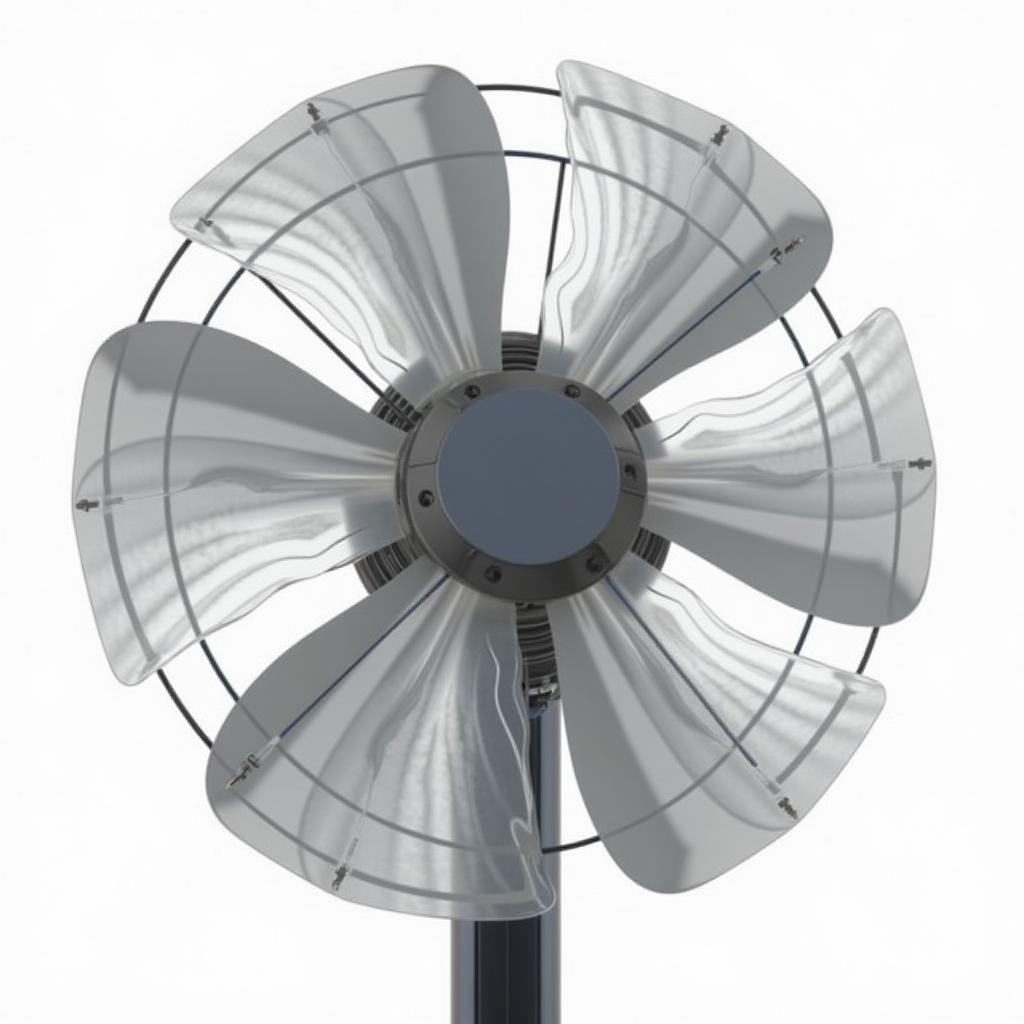You boot up your Windows 10 PC, and as soon as you log in, it sounds like a jet engine is taking off. The culprit? Your computer fan is working overtime. A high fan speed in Windows 10, particularly upon login, can be an irritating and concerning issue. This article will explore the common reasons behind this problem and provide you with practical solutions to quiet down your system and restore peace and quiet to your workspace.
 Laptop with high fan speed upon login
Laptop with high fan speed upon login
Common Causes of High Fan Speed on Windows 10 Login
Several factors can contribute to your fan going into overdrive right when you log into Windows 10:
- Startup Programs: A common cause is a high volume of programs set to launch automatically at startup. These programs consume system resources, causing your CPU to work harder and generate more heat, thus triggering the fan.
- Background Processes: Even with minimal startup programs, certain background processes like updates or system scans can tax your CPU, leading to increased fan speed.
- Driver Issues: Outdated or incompatible drivers, especially for your graphics card or cooling system, can cause conflicts and result in inefficient hardware usage, leading to overheating.
- Dust Accumulation: Dust buildup inside your computer, particularly on the fan blades and heatsink, hinders airflow and heat dissipation, forcing your fan to work harder to compensate.
- Overheating: If your computer’s cooling system is inadequate or malfunctioning, it can struggle to dissipate heat effectively, leading to constantly high fan speeds.
- Malware: In some cases, malware infections can consume significant system resources, putting a strain on your CPU and leading to increased fan noise.
How to Fix High Fan Speed on Windows 10 Login
Let’s explore some troubleshooting steps to address this issue:
1. Disable Startup Programs
- Press Ctrl + Shift + Esc to open Task Manager.
- Navigate to the Startup tab.
- Right-click on any non-essential programs with a high “Startup impact” and select Disable.
 Disabling startup programs in Windows Task Manager
Disabling startup programs in Windows Task Manager
2. Check for Background Processes
- In Task Manager, go to the Processes tab.
- Look for any processes consuming a high percentage of CPU or disk usage.
- If you identify a non-essential process, right-click and select End Task. However, exercise caution and avoid ending critical system processes.
3. Update Drivers
- Press Windows key + X and select Device Manager.
- Expand the categories for your graphics card (Display adapters) and any cooling system devices.
- Right-click on the device and select Update driver.
- Choose Search automatically for drivers to allow Windows to find and install the latest drivers.
4. Clean Your Computer
- Power off your computer and unplug it from the power source.
- Open your computer case (desktop) or access the cooling vents (laptop).
- Use compressed air to carefully blow away dust from the fan blades, heatsink, and other internal components.
5. Check for Overheating
- Download a hardware monitoring software (e.g., HWMonitor, Core Temp).
- Monitor your CPU and GPU temperatures during idle and load (while running demanding applications or games).
- If temperatures consistently exceed recommended levels, consider improving your computer’s cooling system (e.g., adding more fans, upgrading the CPU cooler).
6. Scan for Malware
- Run a full system scan using your preferred antivirus or anti-malware software.
- Ensure your security software is up to date to detect the latest threats.
 A quiet and efficient cooling fan
A quiet and efficient cooling fan
Conclusion
Experiencing high fan speed when you log in to Windows 10 can be frustrating, but by following the troubleshooting steps outlined in this article, you can diagnose the root cause and implement the appropriate solution. Remember to proceed with caution, especially when modifying system settings or cleaning internal hardware components. With a little patience and effort, you can enjoy a quieter and more efficient computing experience.
FAQs
Q1: Why is my fan so loud when I first turn on my computer?
A1: The initial surge in fan noise is often due to startup programs and processes placing a sudden load on your CPU, causing it to heat up quickly.
Q2: How do I know if my CPU is overheating?
A2: Use hardware monitoring software to check CPU temperatures. If they consistently exceed 80-85°C (176-185°F) under load, it’s a sign of overheating.
Q3: Can I prevent high fan speed completely?
A3: While some fan noise is normal, especially during demanding tasks, keeping your system clean, optimizing startup programs, and ensuring proper cooling can significantly reduce fan noise.
Q4: How often should I clean my computer?
A4: It’s generally recommended to clean your computer every 3-6 months. However, if you live in a dusty environment or use your computer extensively, more frequent cleaning may be necessary.
Still Need Help?
If you’re still experiencing issues with high fan speed after trying these solutions, please don’t hesitate to contact our support team. We’re here to help you 24/7!
Phone: 0903426737
Email: fansbongda@gmail.com
Address: Tổ 9, Khu 6, Phường Giếng Đáy, Thành Phố Hạ Long, Giếng Đáy, Hạ Long, Quảng Ninh, Vietnam
For more information on optimizing your PC’s performance and resolving common computer issues, you can find additional helpful articles on our website:
We’re committed to providing you with the information and assistance you need to keep your computer running smoothly!


